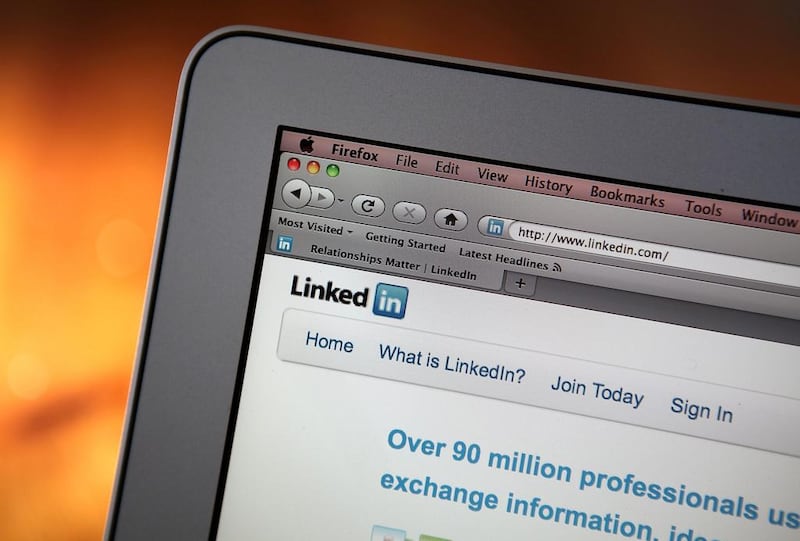I have a colleague who is particularly proud of his business cards. Beneath his name, in smaller type, he lists the ways he’d prefer to be contacted in order of preference. Email is first, followed by texting. The list includes Facebook messaging, direct messages on Twitter, mobile phone calls, and even carrier pigeon. The second-to-least favourite method of contact on the list is “Rock with message tossed into window.” The least favourite method is “LinkedIn message”.
That business card always gets a laugh, which may be an unwelcome data point for the new owners of the service.
This week, Microsoft, the once-ubiquitous software behemoth, purchased LinkedIn, the business-oriented social network with four hundred million users worldwide, for a staggering US$26.2 billion. In other words, they paid about $70 per user, and it’s not exactly clear what they plan to do with them. LinkedIn, for a lot of people, is a nettlesome service that sends out too many emails and pointless alerts. Seventy dollars seems like a lot to spend just to fill up somebody’s inbox.
On the other hand, the world is filled with job-seekers. Engineers in India can work with coders in Abu Dhabi to produce a smartphone app that is funded by investors in Silicon Valley. One of the ways they can find each other – and check each other’s credentials – is with LinkedIn. The problem for Microsoft – and anyone else trying to harness and shepherd the online activity of the digital generation – is that young people just can’t be trusted to stick with something.
“What’s your email address?” I asked a young person I know, the other day. I was planning to send him some information on a job he was interested in.
He emitted an exasperated sigh.
“I don’t really use email?” he said, employing the lilting upward inflection at the end of the sentence that young people use when they’re talking to someone ancient and decrepit. It’s a way of making sure we’re following their complicated and sophisticated thinking.
“Sending emails,” he continued, “is sort of an old way to do things? It’s what – no offense, seriously – but it’s how older people communicate?”
I waited a few moments for my blood pressure to return to a normal systolic/diastolic ratio before continuing. What I needed, I told him, was his preferred method of contact in order to deliver to him the information he requested. Those are pretty much the exact words I used, and I’m sure (if you’re over 39 years old) you can imagine my tone. He quickly gave me his mobile number – “Texting is probably best?” – and then airily told me that I could always send him a Facebook message.
“But we aren’t friends on Facebook,” I said, employing the tone of voice I use when I want to convey that not being friends of Facebook is a status that I’d prefer to maintain.
And then it hit me. “How about LinkedIn? Are you on LinkedIn?”
“I think I am,” he said. “But do people still use that?”
So that’s at least $70 that Microsoft probably spent unwisely.
The irony – well, there are many ironies here, but the chief irony – is that my young friend is looking for a job in the entertainment industry. His dream is to work at a motion picture studio. He has loved movies, he told me, since his childhood – which was about 20 minutes ago, if my maths is correct.
What he doesn’t seem to realise – and to be honest, I didn’t spend much time trying to explain – is that the motion picture business he’s trying to join is in a severe state of contraction. This year, the industry will sell fewer cinema tickets than it has in 20 years, with movie attendance down to almost pre-1920 levels.
Cinemas are clogged with sequels and big-budget reboots, none of which has really made much of a mark. Promotional expenses are soaring. And audiences – in the United States, anyway – are staying home. Probably to watch television.
“Movies?” I could have asked him. “Do people still watch those?”
They do, of course, but the audience includes fewer and fewer young people, who prefer to watch hours of television programmes on Netflix or otherwise stare listlessly at their mobile phones.
The movie business, and the movie studio business, are getting smaller and less relevant every day. Young people are finding other ways, and other media, with which to entertain themselves.
Looking for a job in the movie business may, eventually, be seen as a behind-the-curve move matched only by paying $26 billion for a social network whose chief product is irritation and interruption.
My young friend should have known that, but perhaps he was too busy sighing and condescending to the old man across the table from him who had laughably asked for his email address. When I texted him the next day, I made sure to add, “Check your LinkedIn inbox! Sent you a connection request!” He may as well get used to being obsolete.
Rob Long is a writer and producer in Hollywood
On Twitter: @rcbl





